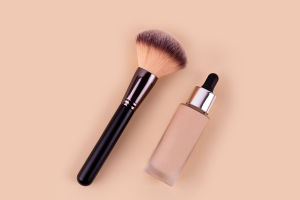Plants play a vital role in human life, and essential oils are considered the first form of medicine used by humans.
From Egyptian hieroglyphs, we can see that the use of essential oils from aromatic plants by doctors has a history of several thousand years.
Essential oils are natural extracts derived from various parts of plants, such as seeds, bark, stems, roots, flowers, and fruits.
Their fragrance not only provides a pleasant sensory experience but also offers health benefits. Essential oils can uplift moods, soothe emotions, and evoke feelings, but their advantages go far beyond their delightful scents.
1. Better Than Antibiotics
The unique feature of essential oils lies in their antibacterial, antimicrobial, and antiviral properties. They attack pathogens without damaging tissues, helping different parts of the body restore their original healthy vitality.
Their scent affects the state of the body, mind, and spirit. Through the olfactory system, the tiny aromatic molecules create various psychological and physiological reactions in the central nervous system. One of the most important characteristics is that essential oils help strengthen the immune system, assisting in resisting attacks from various bacteria and viruses.
2. Not Oily, But Similar
Essential oils are different from other oils; their texture is closer to water rather than oil. They don’t leave grease stains on paper and are highly volatile with distinct scents. Most are lighter than water and float on the surface, forming a thin oily layer.
Many essential oils have a consistency similar to water, such as lavender, peppermint, and rosemary. Others, like vetiver oil, are thick and viscous, while rose oil becomes semi-solid at lower room temperatures but turns liquid when warmed.
3. Mostly Colorless
Most essential oils are clear and colorless, such as peppermint. Some are light yellow (lavender), light green (bergamot), amber (patchouli), or dark brown (vetiver). A few essential oils have unique colors; for example, German blue chamomile is as dark as blue ink.
4. Pure, Not Synthetic
Pure natural essential oils are active and have therapeutic benefits. When used correctly, they do not cause adverse reactions. Synthetic essential oils, often mixed with large amounts of isopropanol, not only have questionable effects but can also pose health risks.
Isopropanol is flammable and toxic; using synthetic oils can lead to dizziness, poisoning, and in severe cases, loss of consciousness or death. Moreover, isopropanol vapor in a confined space can become explosive, so it is crucial to avoid products mixed with it.
5. Complex Composition
Chemically, essential oils are composed of various elements such as alcohols, esters, carbohydrates, aldehydes, ketones, phenols, terpenes, and acids.
Aromatic compounds are formed in the chloroplasts of plant leaves, where they combine with glucose to form sugars and are transported throughout the plant. While many of these elements are known, some remain undiscovered, making it impossible for chemists to accurately recreate any essential oil.
6. Rare and Precious
The amount of essential oil in plants ranges from 0.01% to over 10%. For instance, rose essential oil is particularly scarce. It takes two to three thousand kilograms of rose petals to extract just one kilogram of rose oil, and 12,000 Bulgarian roses to produce only five milliliters of rose oil.
As nature’s gift, essential oils not only provide delightful aromas but also possess profound healing and health value. They remind us to respect nature and choose pure, natural products, allowing both body and mind to receive the most authentic care.


